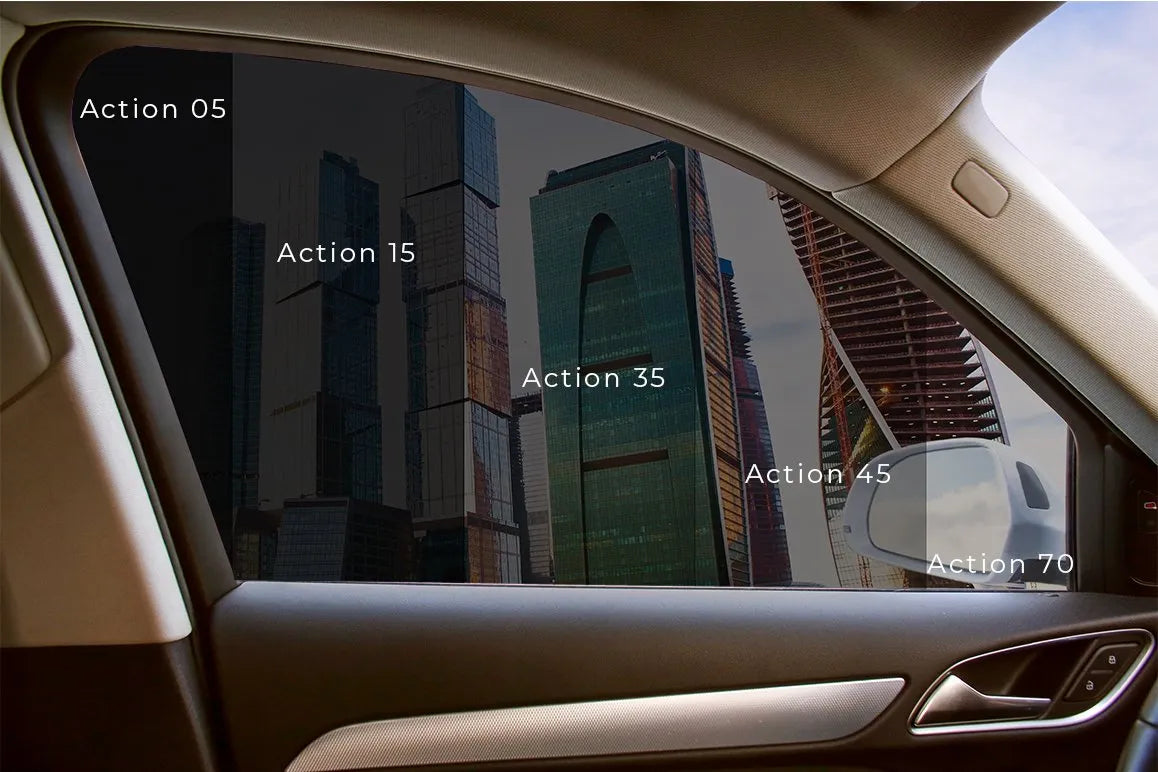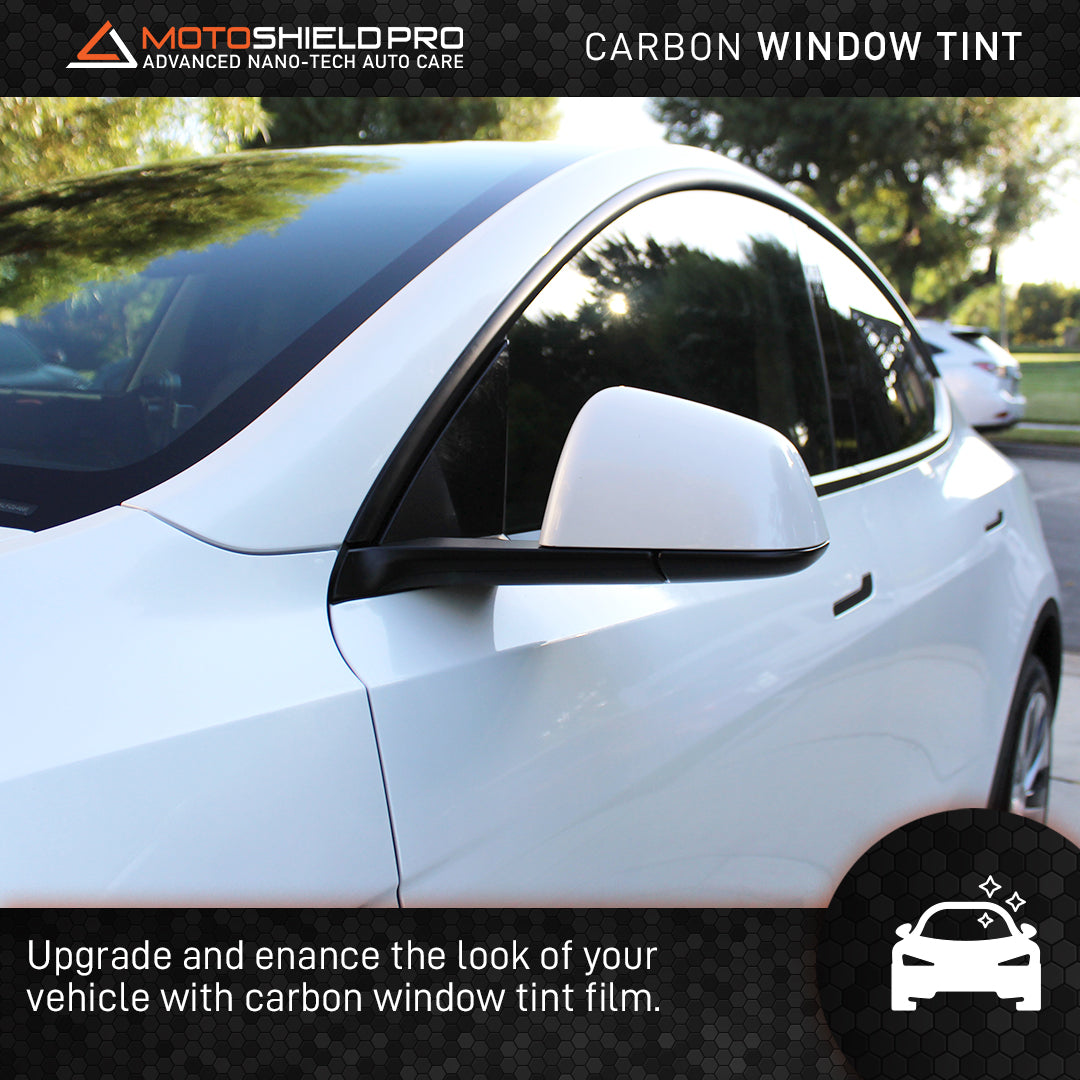Everything You Required to Know About Vehicle Window Tinting for Your Automobile
Automobile window tinting is a sensible enhancement for several lorry owners. It provides advantages such as enhanced convenience and power performance. Various tint films provide to different needs and preferences. Comprehending lawful policies and selecting the best color portion is vital. The setup process and correct maintenance additionally play substantial functions in making sure the durability of the tint. What various other aspects should one take into consideration prior to choosing on window tinting?
Benefits of Vehicle Window Tinting
Although some vehicle owners might overlook it, auto home window tinting offers many advantages that improve both the driving experience and the car's long life. One of the primary advantages is the decrease of heat build-up inside the automobile, permitting a more comfy experience, particularly throughout heat. This can bring about reduced reliance on air conditioning, enhancing fuel efficiency.Additionally, home window tinting supplies protection against unsafe UV rays, which can trigger skin damage and fade indoor products in time. By blocking these rays, the color helps maintain the vehicle's inside and preserve its resale value.Moreover, tinted home windows can enhance personal privacy and safety, as they make it much more tough for outsiders to see inside the vehicle. This included layer of defense can hinder possible theft. Overall, car window tinting offers as a sensible investment that adds to both convenience and the automobile's total well-being.
Sorts Of Window Tint Films
When taking into consideration automobile home window tinting, car proprietors experience a variety of window color films, each developed to fulfill certain demands and preferences. The very first group is dyed home window film, which gives a fundamental level of privacy and UV protection while being affordable. Next off, metalized films integrate little metal bits, mirroring heat and enhancing resilience, although they may interfere with electronic signals.Ceramic movies are another choice, recognized for their exceptional heat being rejected and clarity, offering high efficiency without signal interference. Ultimately, hybrid films incorporate qualities of dyed and metalized movies, striking a balance between expense and capability. Each kind of home window color movie provides distinct advantages, enabling lorry proprietors to choose based upon their certain requirements, such as warm spending plan, control, and appearance factors to consider. Recognizing these options is essential for making an informed choice concerning car home window tinting.
Understanding Legal Rules
When thinking about automobile home window tinting, it is critical to recognize the legal policies that govern color darkness restrictions and windscreen color requirements. These laws can vary considerably from state to state, affecting what is permissible for vehicle owners. Acquainting oneself with these regulations assurances conformity and aids avoid possible fines or fines.
Color Darkness Limits
How can car proprietors assure they continue to be compliant with local laws regarding home window tinting? Recognizing tint darkness limits is essential. Each state has specific regulations that dictate the acceptable degrees of darkness for home window tints, which are gauged by Visible Light Transmission (VLT) portions. Typically, front-side windows need to allow a higher percentage of light contrasted to rear home windows. As an example, some states may allow only 30% VLT for front windows, while the back home windows may be permitted to have especially darker tints. To assure conformity, automobile owners need to consult state standards or neighborhood regulation enforcement for exact details. In addition, accredited tinting specialists can offer insights concerning legal restrictions, ensuring that automobile owners make notified choices.
Windscreen Tint Laws

State-Specific Legislations
Guiding via the landscape of state-specific laws pertaining to vehicle window tinting calls for mindful focus to information, as regulations can vary greatly from one state to one more. Each state has its very own collection of policies governing permitted color percents, kinds of products, and placement on car windows. As an example, some states allow darker tints on rear home windows while prohibiting them on front windows, while others have stricter overall limits. Furthermore, certain states mandate making use of particular materials or need certification from installers. Failing to abide by these guidelines can result in fines or the requirement to remove non-compliant color. Consequently, car proprietors need to consult their state's Division of Electric motor Cars or appropriate authority to ensure adherence to regional laws
Picking the Right Color Percentage
When selecting the ideal tint portion for a vehicle's windows, one need to take into consideration different factors that influence both aesthetics and capability. Color portions typically range from 5% to 70%, with reduced portions supplying darker tones and higher percentages allowing more light in. A darker color can enhance privacy and lower glow, while a lighter color can maintain presence and adhere to legal restrictions.Furthermore, individual preference plays a substantial duty in this choice. Some individuals may like the streamlined appearance of darker tints, while others might prefer a much more open, ventilated feeling. Additionally, the lorry's purpose should be taken right into account; for instance, those utilizing their automobiles for industrial objectives could choose lighter colors to maintain an expert look.Ultimately, the ideal color portion balances personal style, convenience, and adherence to local guidelines, making sure a satisfying tinting experience.
The Installation Refine
An effective installation of window color calls for careful focus to information and the right devices. The procedure generally begins with thorough cleaning of the windows to eliminate dust, dirt, and debris, guaranteeing appropriate bond of the film. Once the surfaces are prepared, the installer procedures and cuts the color film to fit each window accurately.Next, the film is positioned on the glass, typically utilizing an option to assist in simple modification and stop air bubbles. Warmth is in some cases put on the movie to adapt it to the window's curves, enhancing its appearance and long life. After confirming a seamless fit, the installer thoroughly cuts any excess film along the edges.Finally, the installer checks for imperfections and confirms all edges are safe. This precise strategy is vital not only for appearances but additionally for accomplishing the preferred efficiency advantages of window Recommended Site tinting, such as UV protection and warmth decrease.
Maintenance and Take Care Of Tinted Windows
Correct upkeep and care are essential for protecting the honesty of colored home windows. Effective cleansing methods, the avoidance of hazardous chemicals, and normal examinations for damage play important functions in ensuring long life. By following these standards, automobile proprietors can maintain the useful and visual benefits of their window color.
Cleaning Methods for Color
Keeping the clearness and durability of colored home windows requires details cleaning strategies tailored to the movie's fragile surface. It is site important to make use of a soft microfiber cloth to stay clear of scraping the color while cleansing. A mild solution of water and a few drops of light recipe soap can properly eliminate dust and grime. It is recommended to use the cleansing service to the fabric, as opposed to straight onto the colored surface area, to avoid wetness from seeping into the sides of the movie. Mild, circular activities must be employed to clean up the home windows extensively. Regular cleaning helps maintain presence and stops accumulation, ensuring that the color continues to be in prime problem over time. Following these strategies will extend the life of colored windows.
Avoiding Damaging Chemicals
Several family cleaning items are efficient on numerous surface areas, they can present considerable threats to colored home windows. Chemicals such as ammonia, bleach, and certain solvents can degrade the color movie, bring about discoloration and peeling. Individuals need to select pH-balanced cleansers especially developed for tinted home windows. Furthermore, using soft microfiber cloths will certainly assist avoid scratches and preserve the tint's integrity. Normal upkeep is vital; as a result, preventing severe scrubbing up or unpleasant materials is crucial. It is advisable to read item labels thoroughly to confirm compatibility with home window tints. By picking the right cleaning remedies and devices, vehicle proprietors can protect the look and capability of their colored home windows, assuring a longer life-span and height performance.
Evaluating for Damage
Routine evaluations of colored home windows are very important for identifying any kind of indicators of damages that may compromise their efficiency and look. Proprietors must seek gurgling, peeling off, or staining, as these problems can indicate inadequate installment or direct exposure to dangerous elements. It is advisable to check the edges of the film where peeling off may check and begin for any scratches that can influence exposure. In addition, ultraviolet (UV) rays can cause the color to break down gradually, so monitoring its performance in obstructing UV light is vital. If any kind of damage is detected, timely action should be taken, which may consist of professional repair work or substitute. Maintaining tinted home windows not just boosts visual appeals yet also warranties proceeded protection for both travelers and the automobile inside.
Common Myths Concerning Home Window Tinting
What mistaken beliefs border home window tinting for cars? Lots of individuals believe that all home window tints are prohibited, but regulations vary by state, permitting for specific levels of tinting. An additional common myth is that darker colors obstruct more warm; nonetheless, the effectiveness of window movies depends upon their modern technology as opposed to darkness. Some people also think that home window tinting is only for looks, ignoring its advantages, such as UV security and glare reduction. Furthermore, lots of assume that window tinting will certainly damage their car's glass, however expertly used colors can in fact improve glass longevity. Finally, there is an idea that home window tints obstruct visibility, yet top notch movies are designed to keep clear sightlines while providing personal privacy. Recognizing these myths assists consumers make educated decisions regarding window tinting, ensuring they enjoy the complete variety of advantages it provides.
Frequently Asked Concerns
How Much Time Does Home Window Tinting Normally Last?
The durability of window tinting differs based upon factors such as installation quality, film type, and ecological conditions. Normally, high-grade color can last anywhere from five to 10 years prior to needing replacement or reapplication.
Can I Remove Window Color Myself?
Getting rid of window color oneself is feasible, though try this site it might be difficult. Individuals ought to use a warm resource and sticky remover to ease the process, however caution is advised to prevent damaging the car's glass or interior.
What Tools Are Needed for Do It Yourself Window Tinting?

Will Home Window Tinting Damages My Vehicle's Glass?
Home window tinting, when used correctly, generally does not harm a cars and truck's glass. Nonetheless, improper setup or low-quality films may cause peeling off, bubbling, or damaging, possibly jeopardizing the integrity of the glass gradually.
Can Tinted Windows Impact My Automobile's Resale Value?
The influence of tinted windows on a car's resale value can differ. While some customers value the included privacy and UV defense, others might watch it as a potential issue, potentially affecting resale positively or negatively. When taking into consideration vehicle window tinting, vehicle proprietors experience a variety of home window tint films, each made to fulfill particular needs and choices. When thinking about automobile home window tinting, it is crucial to recognize the legal policies that govern tint darkness limits and windshield color demands. Usually, front-side windows have to enable a higher percent of light contrasted to rear home windows. Some states may enable only 30% VLT for front home windows, while the rear windows might be permitted to have especially darker tints. Some states allow darker tints on back home windows while forbiding them on front home windows, while others have more stringent total limitations.